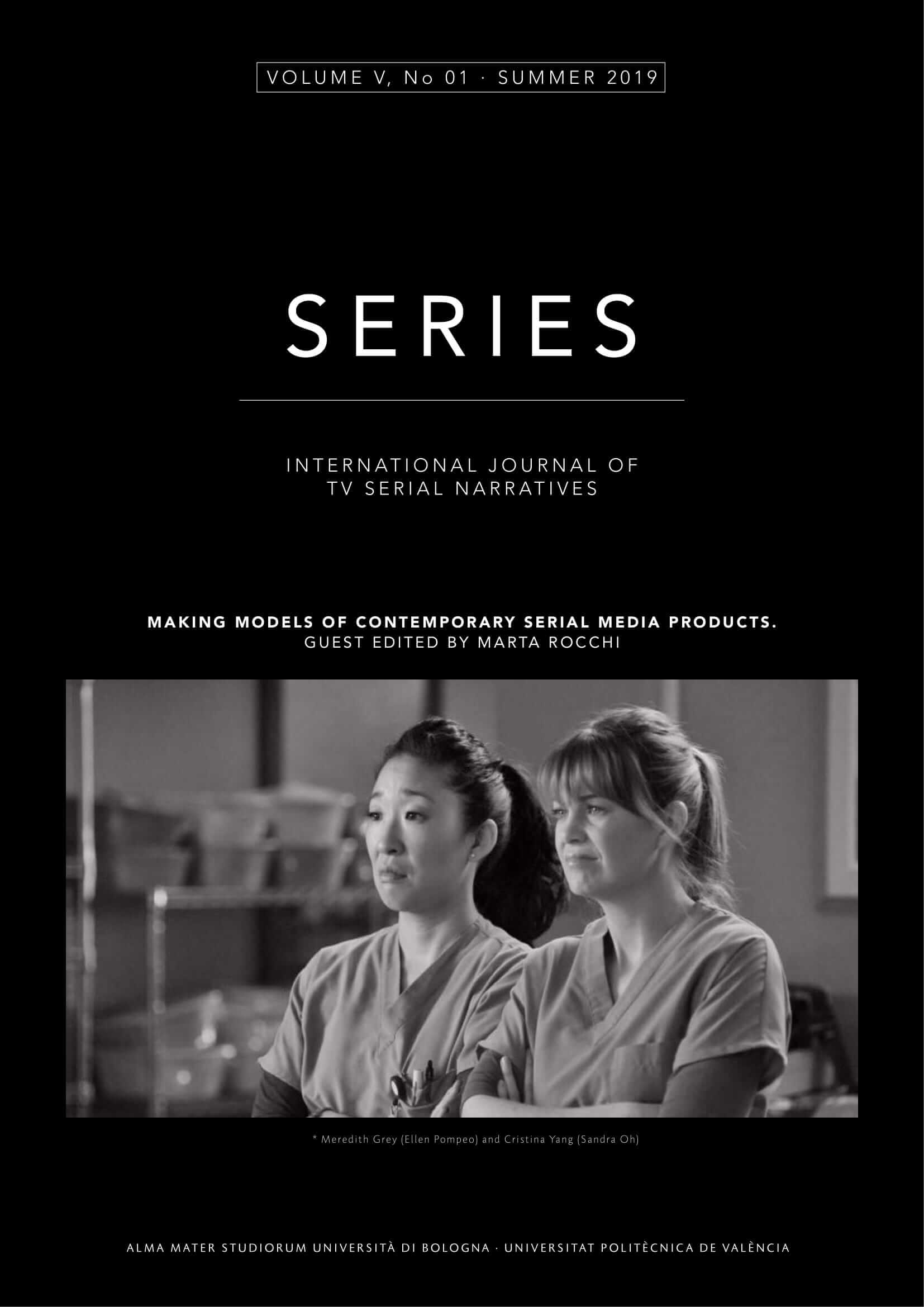Predicting Nielsen Ratings from Pilot Episodes Scripts: A Content Analytical Approach
DOI:
https://doi.org/10.6092/issn.2421-454X/9079Parole chiave:
pilot episode, script, screenplay, television, television series, television ratings, Nielsen ratings, statistical analysis, panel data, regression analysis, content analysis, network analysis, semantic network analysisAbstract
Textual and content data were extracted from the pilot episode scripts of 183 new, dramatic television series and used to predict the 18-49 demo ratings for the first five episodes of each series’ first season. As expected, the originality of a series’ premise, the track record of success of the its creator(s), and the cognitive complexity of its pilot episode script each explain a statistically significant proportion of the variance in the Nielsen ratings over the first five episodes.Riferimenti bibliografici
Adalian, Josef (2012). “Six Female Showrunners Talk Ratings, Their Comedy Icons, and Internet Hate.” Vulture, 25 May 2012. http://www.vulture.com/2012/05/female-showrunners-talk-ratings-internet-hate.html (last accessed 26-06-19).
Basuroy, Sumanand Subimal Chatterjee (2008). “Fast and frequent: Investigating box office revenues of motion picture sequels.” Journal of Business Research 61(7): 798-803. http://dx.doi.org/10.1016/j.jbusres.2007.07.030.
Calvisi, Daniel (2016). Story Maps: TV Drama—The Structure of the One-Hour Television Pilot. Palos Verdes, CA: Act Four Screenplays.
Carter, Bill (2010). “An ‘Idol’ Ratings Loss, But Not in its Pocketbook.” The New York Times, 6 April 2010. http://www.nytimes.com//2010//04//07//business//media//07adco.html (last accessed 26-06-19).
Danaher, Peter J., Tracey S. Dagger and Michael Smith (2011). “Forecasting television ratings.” International Journal of Forecasting 27(4): 1215-40. http://doi.org/10.1016/j.ijforecast.2010.08.002.
Eliashberg, Jehoshua, Sam K. Hui and Z. John Zhang (2014). “Assessing box office performance using movie scripts: A kernel-based approach.” IEEE Transactions on Knowledge and Data Engineering 26(11): 2639-48. https://doi.org/10.1109/TKDE.2014.2306681.
Goetzmann, William. N., S. Abraham Ravid and Ronald Sverdlove (2013). “The pricing of soft and hard information: economic lessons from screenplay sales.” Journal of Cultural Economics 37(2): 271-307. https://doi.org/10.1007/s10824-012-9183-5.
Hunter, Starling D. (2014). “A novel method of network text analysis.” Open Journal of Modern Linguistics 4(2): 350-66. https://doi.org/10.4236/ojml.2014.42028.
Hunter, Starling and Yelitza Prada Breen (2017). “W(h)ither the Full Season: An Empirical Model for Predicting the Duration of New Television Series’ First Season.” Advances in Journalism and Communication 5(3): 38-97. https://doi.org/10.4236/ajc.2017.52005.
Hunter, Starling et al. (2016). “Moneyball for TV: A model for forecasting the audience of new dramatic television series.” Studies in Media and Communication 4(2): 13-22.
Hunter, Starling, Susan Smith and Ravi Chinta (2016). “Predicting new TV series ratings from their pilot episode scripts.” International Journal of English Linguistics, 6(5):, 1-12. DOI: 10.5539/ijel.v6n5p1DOI: 10.5539/ijel.v6n5p1http://dx.doi.org/10.5539/ijel.v6n5p1.
Hunter, Starling, Susan Smith and Saba Singh (2016). “Predicting box office from the screenplay: A text analytical approach.” Journal of Screenwriting 7(2): 135-154. https://doi.org/10.1386/josc.7.2.135_1.
Santiago, Rosario (2007). “For Advertising Purposes Grey’s Anatomy May Well Be Colored Green.” BuddyTV, 3 October 2007. http://www.buddytv.com/articles/greys-anatomy/for-advertising-purposes-greys-11849.aspx (now offline).
Scott, William A. (1962). “Cognitive complexity and cognitive flexibility.” Sociometry 25(4): 405-14. http://doi.org/10.2307/2785779.
Sereday, Scott and Jingsong Cui (2017). “Using Machine Learning to Predict Future TV Ratings.” https://www.nielsen.com/us/en/insights/article/2017/using-machine-learning-to-predict-future-tv-ratings/# (last accessed 26-06-19).
Sobieck, Ben (2008). “What are the Upfronts?” Writer’s Digest, 22 May 2008 http://www.writersdigest.com/editor-blogs/script-notes/industry-updates/what-are-the-upfronts (last accessed 26-06-19).
Downloads
Pubblicato
Come citare
Fascicolo
Sezione
Licenza
Copyright (c) 2019 Starling Hunter
La rivista è rilasciata sotto una licenza Creative Commons Attribuzione 4.0 Internazionale (licenza completa).
Vedere anche la nostra Open Access Policy.





